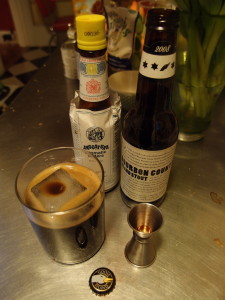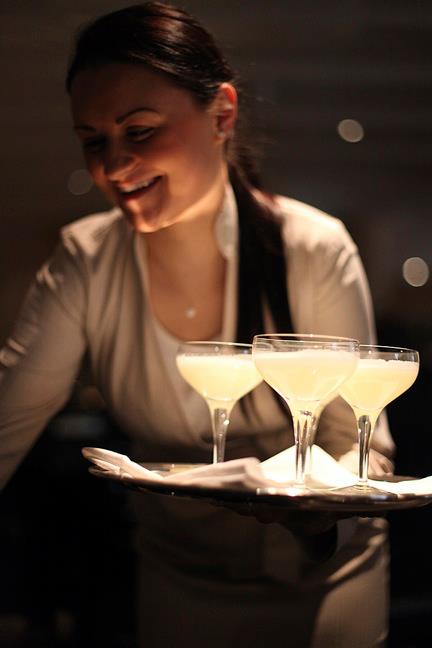One of the classic combinations in certain regions of France is Picon Biere, that is a Pilsener or Wheat beer with a splash of Amer Picon poured in.
Unfortunately, we don’t get Amer Picon here in these United States.
However, even if Diageo refuses to send us Amer Picon, we do get a lot of other Amaros…
With this series of posts we shall explore the possibilities we do have available.
—
2008 Goose Island Bourbon County Stout & Angostura Bitters
To be honest, I’m not over fond of most examples of beers aged in spirits barrels. They are usually too alcoholic and too sweet. If you want a beer and a shot, pour yourself a beer and a shot.
Brewer’s Notes:
Brewed in honor of the 1000th batch at our original Clybourn brewpub. A liquid as dark and dense as a black hole with thick foam the color of a bourbon barrel. The nose is an intense mix of charred oak, chocolate, vanilla, caramel and smoke. One sip has more flavor than your average case of beer.Recipe Information:
Style: Bourbon Barrel-Aged Imperial Stout
Alcohol by Volume: 14.5%
International Bitterness Units: 60
Color: Midnight
Hops: Willamette
Malt: 2-Row, Munich, Chocolate, Caramel, Roast Barley, Debittered Black
The Goose Island Bourbon County Stout is a well regarded example of the style, but I still find it cloying and over alcoholic.
What do bartenders do when they find things cloying and alcoholic? Why, we add water (ice) and bitters.
Angostura Bitters is one of the two bitters brands which survived both prohibition and the great cocktail drought of the 50s through the 80s, the other being Fee’s. Angostura is made in Trinidad, my famous writer friend Camper English visited and wrote about them in detail on his website Alcademics in the article, “The History and Production of Angostura Bitters.”
An important, and somewhat arbitrary, distinction in bitters, and a relic of prohibition, is the difference between “potable” and “non-potable” bitters. During prohibition, if your bitters were considered “non-potable”, that is, undrinkable, you could continue to sell them, while “potable” bitters fell under the same bans as regular booze. In modern times, the difference comes down to, if your bitters are “non-potable”, you can sell them in grocery stores, and if they are “potable”, they have to be sold in liquor stores. Gary “Gaz” Regan tells the story that the early iterations of his Regan’s Orange Bitters were just too damn tasty and the TTB sent him back to the drawing board to make them less drinkable. Not that I don’t know people who drink Angostura bitters shots, but then, I do sometimes run with a rough crowd. On the other hand, Angostura bitters are a lot more intense than most Amari, so I will slightly reduce the amount I am using in this version of Amaro and Beer.
METHOD: Place a large ice cube into the mason jar or glass of your choosing. Pour in a quarter ounce of Angostura Bitters. Pour over a Bourbon Barrel Aged Stout. Stir briefly. Garnish optional.
Tasting this, sacrilege though it may be, I don’t think it is a horrible idea to serve the Bourbon County Stout on the rocks. The spice and bitterness from the bitters are kind of interesting, too. I skipped the fruit salad, aka garnish, probably best if you do too.
I still couldn’t finish the whole bottle.




